I do truly enjoy repairing game consoles. The SNES was the first console I owned myself so it has a special place in my heart. I love repairing them, cleaning them, and getting them ready to be used again. Sometimes I think there’s nothing more rewarding than that. But other than the common broken power jack issue, chip failures are the main problems with Super Nintendos. Every so often I’ll get one that needs a recap, but chip failures are by far the most common problem besides broken power jacks. But no matter how rewarding it may to fix these things, it eventually becomes depressing endlessly removing one dead chip after another.
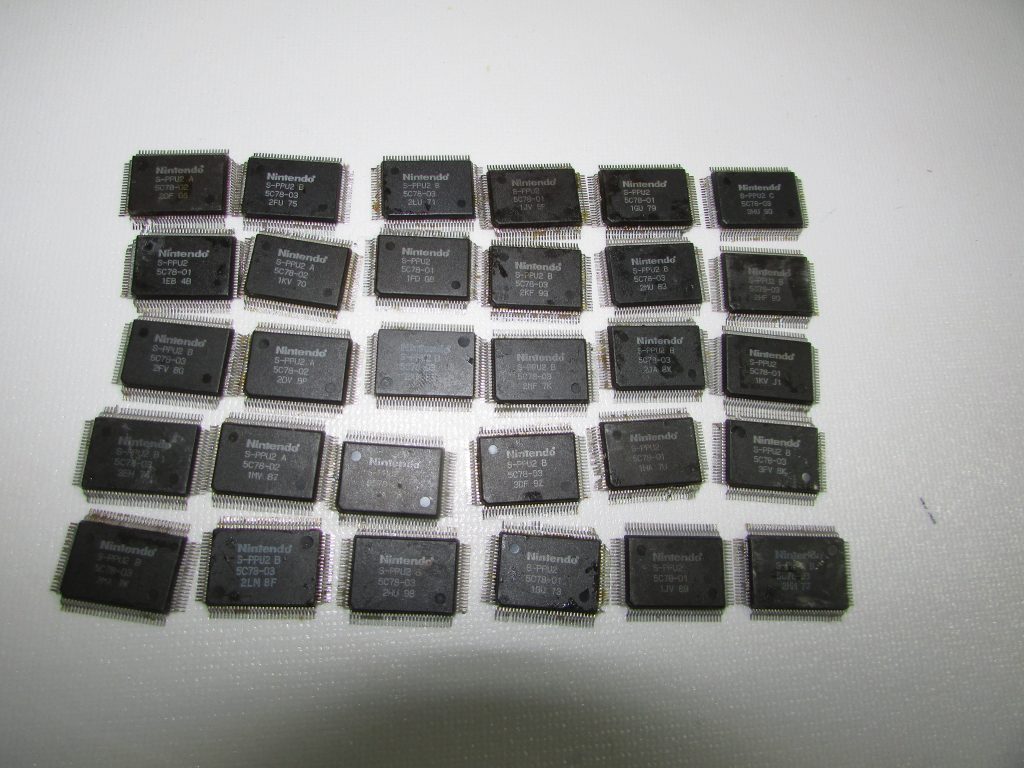
There are 4 revisions of PPU2. S-PPU2, S-PPU2 A, and S-PPU2 B are the three most likely to fail, at least from my small sample size. S-PPU2 C and CPU-B seem to be hardier than the earlier revisions.
I often hear people say bad CPUs on Super Nintendos are a rare issue. But it sure doesn’t seem that way to me. Maybe a quarter of SHVC consoles I get have a bad PPU or CPU. Of course, I’m getting consoles that have already been identified as broken, but still. People say it’s not an epidemic on the same level as, say, bad capacitors on PC Engine Duos or Game Gears, but I don’t think it’s unreasonable to assume that all the old revision PPUs and CPUs in these Super Nintendos will go bad in the not-too-distant future.

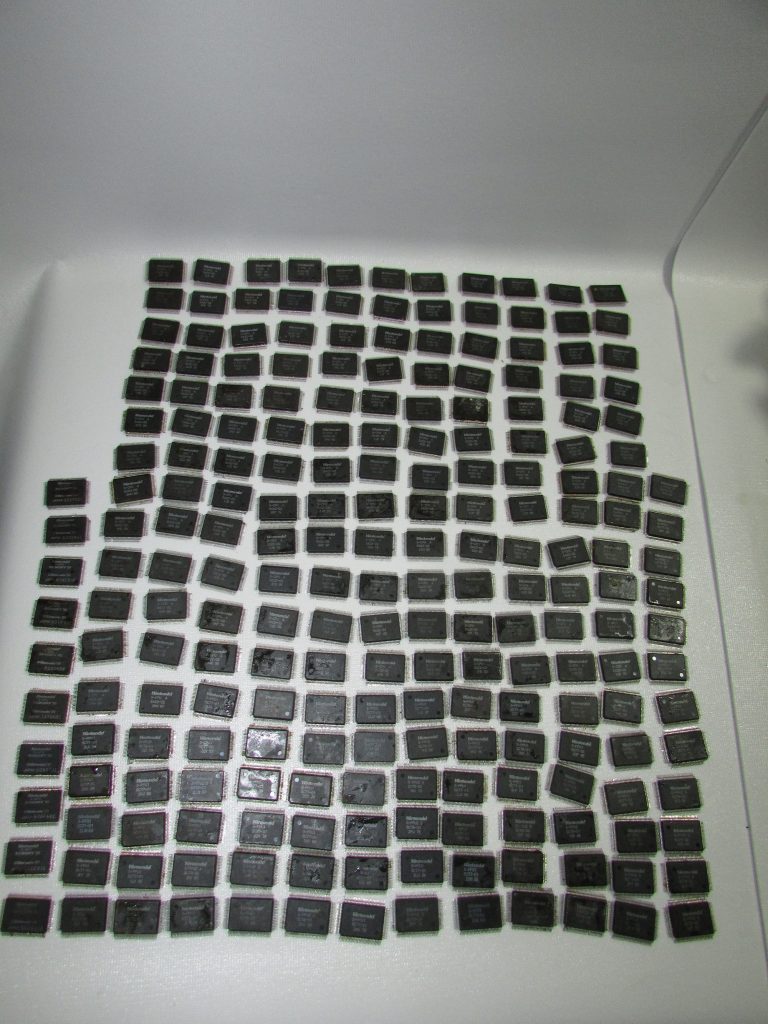
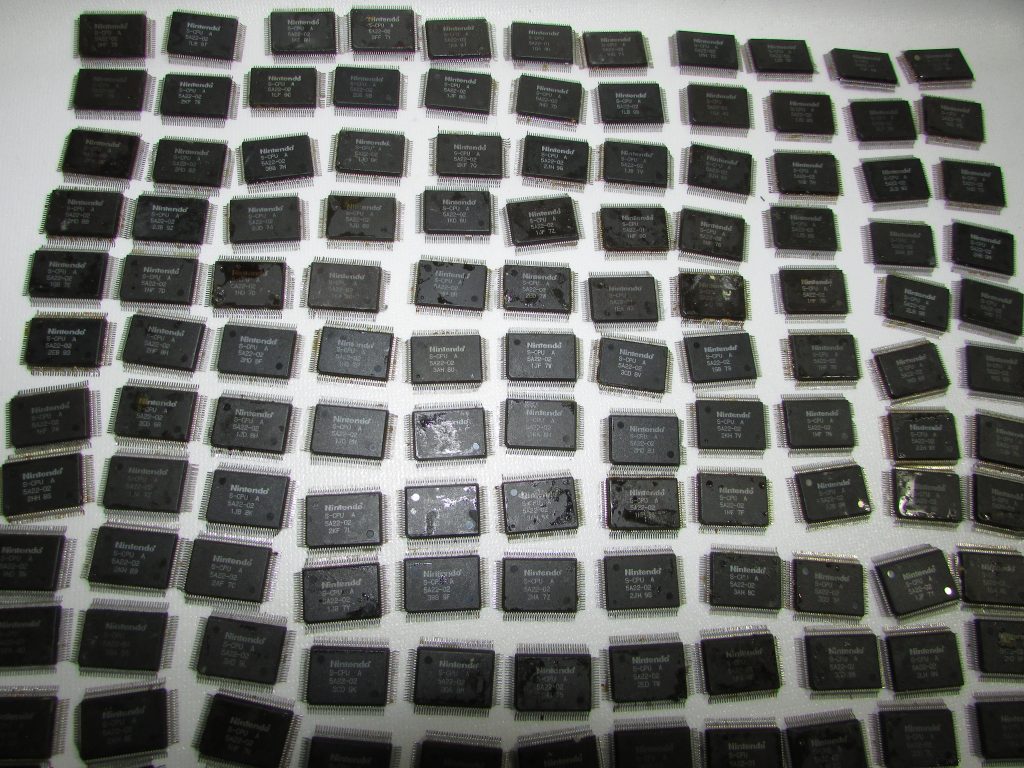
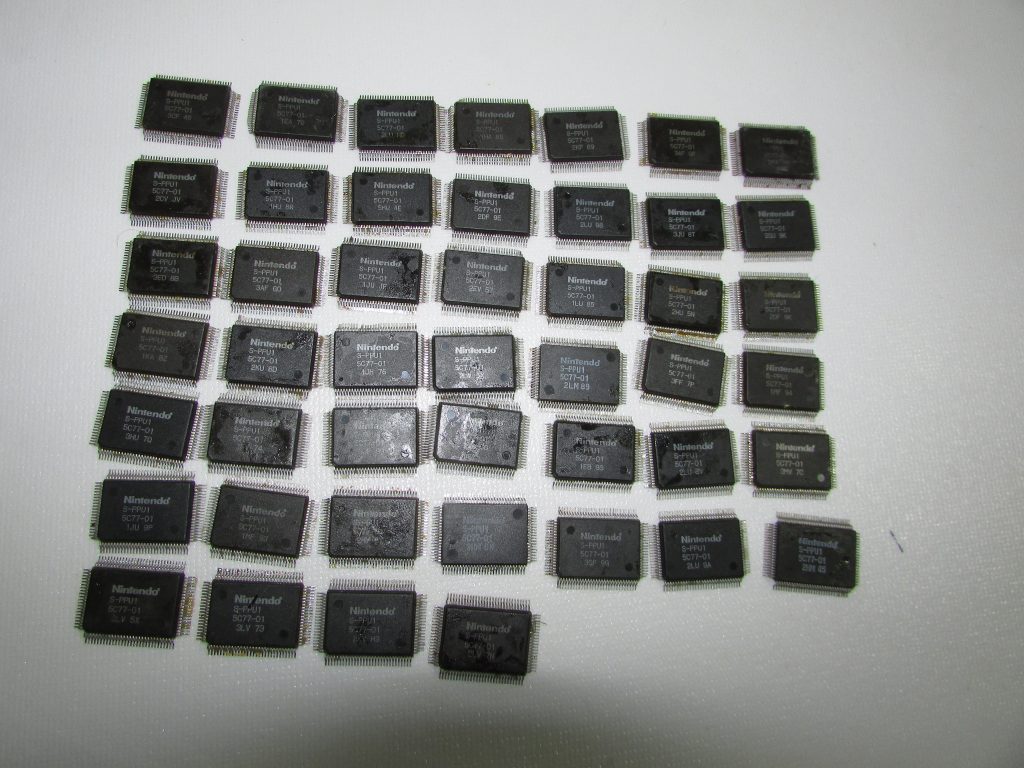
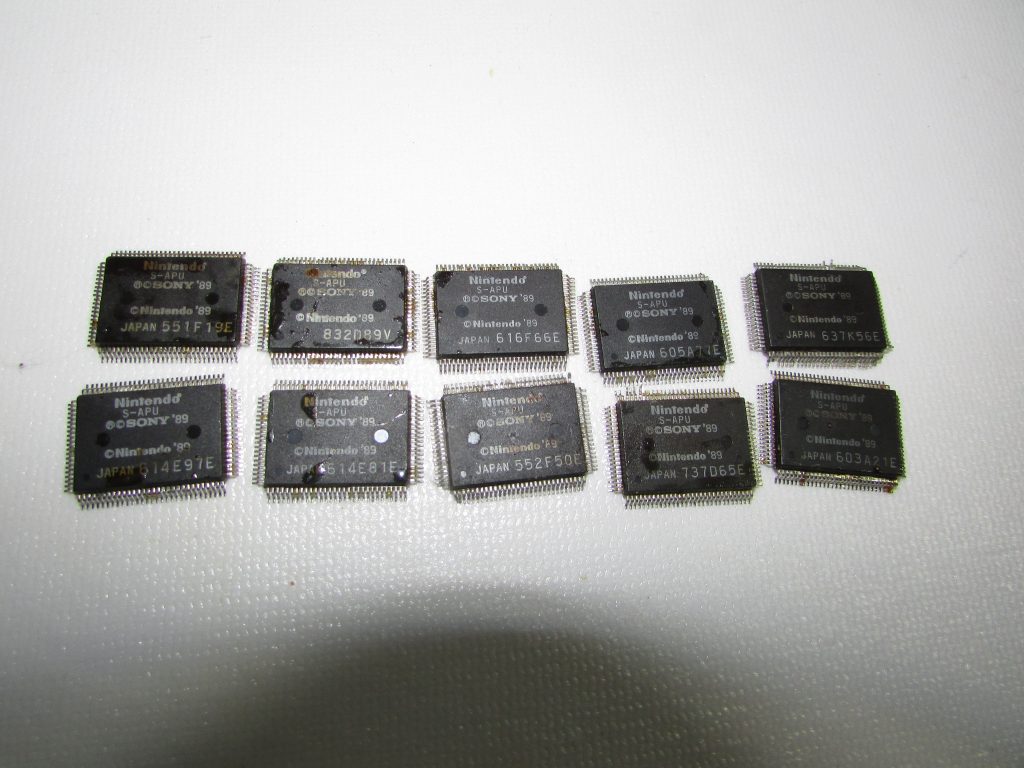
what is so special about 1-chip snes ? i often read they offer better quality, but is that something you notice ? it’s a huge difference ?
It really does have better quality video output. For me it’s definitely noticeable when using S-video or RGB. It’s much sharper than the other revisions, both on a CRT or on a modern TV. But when using composite I can’t really tell the difference.
I’d suggest checking out RetroRGB’s site if you’re trying to decide whether it’s worthwhile to buy one. He has some great comparisons showing the difference in video quality between the various revisions.
My Life in Gaming on YouTube also have some really informative videos on the 1-chip:
https://youtu.be/gvliOHNfCAA
https://youtu.be/1k2HVB9S8CA?t=325
thanks for explaining ! i had watched some of those videos before, but it keep me wondering lol
idk which snes i have, but i’m happy with the graphic i got from s-video output
maybe someday i will get the fancier RGB mod going on, but not yet haha
I recently bought a 1-Chip that was “broken” on ebay. I had hoped that a good cleaning would sort it out… I’m starting to fear that the APU has gone bad because of the game freezing on the splash screen. I’m guessing a donor APU the only reliable or reasonable fix? Where can you find them?
My guess would be that you’re right and it’s probably a bad APU. It could also be a broken trace somewhere, but you can usually spot that kind of thing visually. If the console was relatively clean inside when you opened it and doesn’t appear to have ever been wet, then it’s probably not a broken trace.
As far as I know there’s nowhere to get a donor APU other than another SNES. I’ve only ever been able to fix consoles like that by taking a donor APU from boards that were really severely water/cockroach-damaged. I don’t find those very often, so it’s not a repair I’m usually able to do, since I would feel too bad using a functional board or one that could easily be fixed as a parts donor.
The APU is interchangeable between all 1-CHIP boards, all SNS-CPU-APU-01 boards, and all SNES Mini/Jr. boards. Since SNS-CPU-APU-01 is one of the least popular board revisions it seems maybe a little bit more justifiable to use those as donor boards when fixing 1-CHIPs or Minis.
In your experience, could reflowing all of the solder connections on the APU have an impact? Or will they just blow out and cease to work after a time?
Hey, I’m sorry for the slow response. For some reason I didn’t get a notification about your message.
Reflowing all the legs couldn’t hurt. Just use a lot of flux so you don’t bridge any of them together. It’s never fixed that issue for me, but it’s worth a shot. It’s always possible there may just be some corrosion on some of the legs or on some of the pads that’s causing them not to make proper contact. Although I’d say corrosion that bad would probably be noticeable just by looking at it. But if it’s just a little bit of corrosion on some of the legs or pads then reflowing would probably fix it.
Would you, by any chance, have some spare dead chips on hand? I have developed a hot air method for decaping the silicon die from plastic package and this would be a great opportunity to document the various SNES chips though high resolution microphotography.
https://hackaday.com/2020/03/11/chip-decapping-the-easy-way/
Hello, 1 year later and I did try reflowing the legs yesterday…. No luck 🙁 It was sitting in my closet and I remembered our convo so I thought I’d give you an update. Still trying to find a donor board, not giving up yet!
good luck, matte ! as for myself, i haven’t fixed my snes with those waves on the screen yet ! but i bought yoshi island lol it was so cheap i couldn’t let the opportunity pass by haha
It is bizarre that these chips are failing. If you are keeping the dead chips, I’d be interested in purchasing them from you to document the die of each of the different revisions and take some nice photos. Maybe there’s also something that will show visually on the die? cheers!
Sure, I’ve still got plenty of them. I just toss them in a box after removing them though so they all have bent legs. If you want them I would just charge for the shipping cost. If you’re interested you can email me at smilecitrus at gmail dot com and let me know your shipping address. I can then just send you a paypal invoice for the shipping cost and send them out.
I have no sound problem on gpm-02 i replaced all the caps still no sound burn in test says APU 55 Fail sometimes Apu 17 fail there are 2 audio chips on that board what can i do to fix it i do have couple chips and boards laying around to.
I’m really sorry, but I don’t have much experience fixing audio problems. A recap usually fixes buzzing or crackling in the audio, but I haven’t encountered many systems with no sound at all. I did once have a GPM-02 motherboard with no sound that I fixed by replacing the S-SMP chip. But the same issue could be caused by other problems, such as a broken trace somewhere on the motherboard or even a bad CPU. Or it’s also possible the S-DSP chip could be bad. I’ve only seen the problem a few times on GPM-01 or GPM-02 boards, so I honestly just don’t know for sure which is the most likely solution.
The only advice I can give is to look closely for any broken traces. If you can’t find any then you may want to try replacing either the S-SMP or S-DSP chip. Replace one, then test. If it still doesn’t work, then try replacing the other. If there’s still no sound after replacing both, then it’s most likely a broken trace somewhere. Or if the board has CPU-A on it then it could be a bad CPU. CPU-B is unlikely to go bad though, so if it has CPU-B then it’s probably fine.
Are different CPUs and PPUs interchangeable? Example –
S-CPU vs S-CPU A
Thanks!
Yup, they’re all 100% interchangeable. They all work fine on any motherboard revision, too. So you can take a chip from a later board and install in an earlier one, or vice-versa.
do you think one day some one will make clone chips for the CPU’s, PPU 1 & 2?
It would be cool if there were a simple drop in replacement, but I doubt anyone will make anything like that. It seems like it would probably be way too expensive for such a niche market.
There have apparently been clones of the CPU and PPU chips since the 1990s though. They were common in fake SNS-101 consoles sold in the late 90s and early 2000s. I’ve never see one myself in person, but if you do a google search for “fake snes jr” you can find some images showing the motherboards and the chips on them. There’s some information on the NESDev forums about the clone chips themselves. Apparently there were bugs with certain games.
Hello, snsp CPU 01, how do i recognize APU BB Fail chip?
Thanks !
Sorry, I’m not sure. I tried to do a Google search and came across your post on reddit. You already tried everything I would suggest.
The guy in this video replaced X1 though. Maybe if you have a spare board, try replacing that: https://www.youtube.com/watch?v=uMRTv6EvaxQ